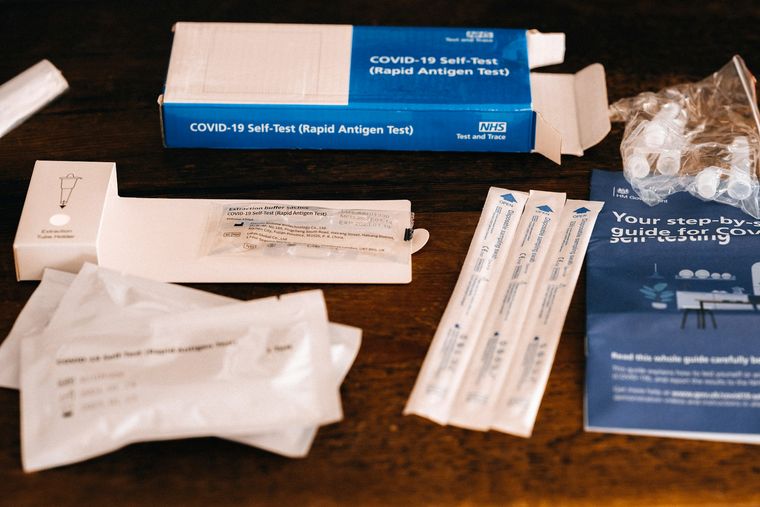Powering the Next Decade: Why the Battery Pack Market Will Surpass USD 472 Billion by 2034
The battery pack market is rapidly growing, with predictions of surpassing USD 472 billion by 2034. This growth is driven by several intersecting factors

The battery pack market is on a steep upward curve. Headlines projecting a market value north of USD 472 billion by 2034 are not bold guesses — they are the natural consequence of converging trends: the electric vehicle (EV) revolution, rapidly expanding energy storage for renewables, relentless demand from consumer electronics, and a push for resilient, decentralized power systems. Below I unpack the drivers, the technical shifts, and the commercial realities that make that USD 472 billion figure believable — and why companies and policymakers should pay attention now.
Demand engines: EVs, grids, and everything in between
First, the elephant in the room: transportation. Passenger EV adoption has gone from niche to mainstream in less than a decade in many markets. Electric cars need large, reliable battery packs; commercial fleets and two-wheelers add further volume. As manufacturers scale and range anxiety fades, average battery capacity per vehicle is rising, not falling — that multiplies installed pack value even as cell costs decline.
Second, electricity systems are changing. Solar and wind are variable by nature; balancing them requires storage at multiple scales. Home energy systems, community microgrids, and utility-scale batteries all use modular packs with sophisticated management electronics. Grid applications tend to favor durability, safety, and long cycle life — features that command a premium and expand market value.
Third, portable electronics and emerging uses — power tools, drones, medical devices, and industrial robotics — continue to push demand for compact, high-performance packs. Add the nascent but fast-growing markets like aviation batteries for eVTOLs and maritime electrification, and the breadth becomes clear.
Technology trends that lift value (not just volume)
Most value in the market doesn’t come solely from raw cell production; it comes from intelligent packaging: battery management systems (BMS), thermal management, safety features, modular enclosures, and integration services. As packs become smarter and application-specific, their per-unit price remains robust even as cell costs fall.
Chemistry evolution matters too. Lithium-ion remains dominant, but we’re seeing shifts: higher-nickel cathodes for greater energy density, silicon-rich anodes for higher capacity, sodium-ion as a complementary low-cost option, and solid-state research promising safety and density gains. Each new chemistry or architecture creates fresh design and manufacturing work — and new value capture points across the supply chain.
Manufacturing sophistication is rising: automated cell assembly, laser welding, advanced cell testing, and digital twin modeling for pack design. These engineering layers and integration services increase the overall market size measured in dollars.
Supply chain and raw materials: both risk and opportunity
Raw materials — lithium, nickel, cobalt, manganese, graphite — are the lifeblood of batteries. Supply bottlenecks, geopolitics, and price volatility have forced companies to vertically integrate, strike long-term offtake deals, and invest in recycling. All of that activity adds commercial value. Meanwhile, investments in mining, refining, and materials innovation are reshaping where and how battery packs are made.
Recycling and second-life markets are especially important. Retired EV packs can be repurposed for stationary storage, creating cascading revenue streams and improving lifecycle economics. Policies that incentivize reuse and recycling will expand total market value by creating new businesses around collection, remanufacturing, and materials reclamation.
Regional dynamics: who wins where
China currently leads in cell manufacturing scale and supply chain integration, but demand growth is global. Europe’s regulatory push and the Inflation Reduction Act-style incentives in other regions have sparked local battery gigafactory projects. The U.S., EU, and East Asia will likely share the lion’s portion of future pack production, while emerging markets in Southeast Asia and India will grow rapidly in unit volumes for two-wheelers and small EVs.
Regional policy — subsidies, safety standards, recycling mandates — will shape product specifications, localization strategies, and therefore the market’s dollar size.
Challenges that could slow growth (but not stop it)
There are headwinds. Raw material scarcity could raise costs and slow deployment. Safety incidents can trigger stricter regulations and slower adoption in sensitive segments. Technology transitions (e.g., a sudden leap to solid-state) could temporarily disrupt incumbents. However, each challenge also spawns investment and innovation: alternative chemistries, better BMS algorithms, advanced thermal systems, and supply diversification.
What businesses should do now
If you’re a manufacturer, prioritize modular, scalable pack designs and invest in BMS and thermal controls — this is where margin lives. If you’re a materials firm, accelerate recycling and alternative chemistries to reduce exposure to single-commodity risk. Policymakers should craft incentives that reward lifecycle performance and recycling, not just upfront deployment.
Looking forward: why USD 472 billion is plausible
Put simply: rising unit energy per pack, broadening application domains, and the increasing sophistication of packs (software + hardware + services) combine to grow the market in dollars faster than unit counts alone would suggest. As electrification accelerates and the energy transition deepens, battery packs are no longer a single-industry story — they’re a cross-sector backbone. That’s why hitting and even exceeding USD 472 billion by 2034 is well within reach.
The bottom line: the battery pack market is not just growing — it’s maturing into a complex ecosystem of manufacturing, engineering, materials, and services. Companies that move beyond commodity cell making and capture the system and lifecycle value will be the ones to benefit most from the surge ahead.
Source: https://www.gminsights.com/industry-analysis/battery-pack-market


